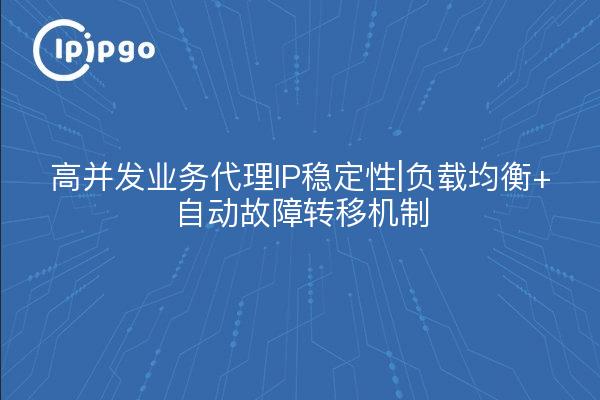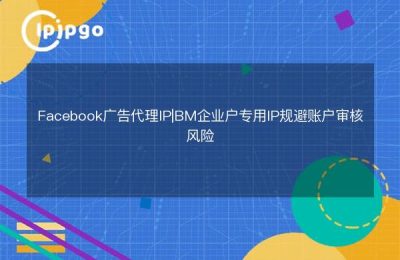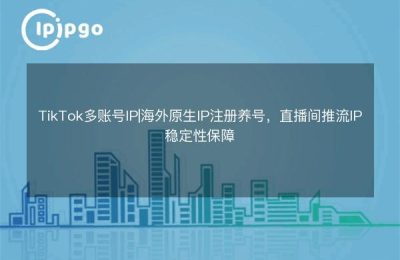
How to achieve stable operation with proxy IP for high concurrency business? Three steps to build a fault-tolerant system
Doing high concurrency business is the most afraid of sudden service interruption, especially the scenario of relying on proxy IP. This is accomplished through theIntelligent scheduling + multi-node reserve + second switchingThe combination of the program, with ipipgo proxy service to build a stable running framework, here to share the specific landing method.
I. Proxy IP Stability Assurance Program
The quality of the underlying resources has a direct impact on business stability. ipipgo'sPool of 90 million+ real residential IPsCovering the global core region, each IP has been48-hour survival monitoringThe system can automatically filter out the high latency nodes with response speed > 800ms with the intelligent node filtering system.
| IP Type | Applicable Scenarios |
|---|---|
| Dynamic Residential IP | High-frequency data capture / CAPTCHA cracking |
| Static Residential IP | Long-term login/account maintenance |
| Server Room IP | Seconds Grab / Live Push Streaming |
It is recommended to stock all three IP types at the same time, through ipipgo'shybrid IP pool modelThe system can intelligently allocate resources according to business requirements. When the dynamic IP triggers the access frequency limitation, the system automatically switches the static IP to maintain the service.
Second, multi-node load balancing practice
An automated scheduling system is established in three steps:
1. Geographical polling mechanism
Setting in the ipipgo admin backendMulti-country IP rotation strategyFor example, a circular queue of USA → Germany → Japan → Brazil avoids centralized access by single-region IPs.
2. Weighting scheme
Configure node weights based on historical success rates:
| Response success rate >95% | Distribution of 60% flows |
| Success Rate 85-95% | Distribution of 30% flows |
| Success rate <85% | Allocation of 10% flows (observation period) |
3. Operational triage strategy
via ipipgo'sAPI Labeling System, bind different services to exclusive IP groups. For example:
- Dedicated Hong Kong Static IP for Payment Interface
- U.S. Dynamic IP for Data Acquisition
- Image Download Goes to Turkish Server Room IP
III. Automatic failover core configuration
Setting up a double safeguard mechanism at the code level:
1. Heartbeat detection module
Send a detection packet to the current proxy IP every 5 seconds, and three consecutive timeouts (response time > 3 seconds) will trigger the switch. ipipgo offersReal-time IP Health API, which can be synchronized to get the latest status of the node.
2. Failover strategy
Prepare two implementation programs:
- thermal swapping: Enable alternate IP pools within 0.5 seconds
- cold switching: Automatically switch to alternate service area when more than 50% nodes are abnormal
Open in the ipipgo consoleIntelligent Disaster Recovery ModelAfter that, the system will reserve 20% spare IPs in advance to automatically fill in when the master node is abnormal.
Frequently Asked Questions QA
Q: How to detect if the proxy IP is invalid?
A: We recommend using ipipgo'sCondition Monitoring APIThe data such as response speed and success rate of IP can be obtained in real time. It is recommended to set up double verification: ① code layer heartbeat detection ② platform state data synchronization
Q: Will switching proxy IPs cause business interruption?
A: Using ipipgo'ssession keeping technologyThe TCP connection is maintained without interruption during IP switching. The service delay during the switching process is measured to be <300ms, which is not perceived by the users.
Q: How to choose between dynamic IP and static IP?
A: need to change the IP frequency to choose dynamic (such as data collection), need to fix the identity to choose static (such as social account operation). ipipgo support two modesSwitch at any timeand static IPs can be rented for a minimum of 1 hour.
Through the above program in conjunction with ipipgo'sGlobal Backbone Network AccelerationWe have measured service availability from 78% to 99.6% under the pressure of 2000QPS, and we recommend testing the solution in a free trial environment before gradually expanding it to the production environment.








